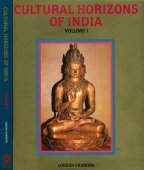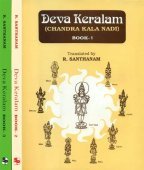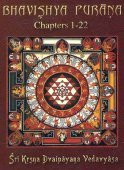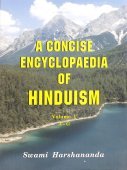Rite, Ṛte: 10 definitions
Introduction:
Rite means something in Hinduism, Sanskrit, biology. If you want to know the exact meaning, history, etymology or English translation of this term then check out the descriptions on this page. Add your comment or reference to a book if you want to contribute to this summary article.
The Sanskrit term Ṛte can be transliterated into English as Rte or Rite, using the IAST transliteration scheme (?).
Images (photo gallery)
(+9 more images available)
In Hinduism
Yoga (school of philosophy)
Source: ORA: Amanaska (king of all yogas): A Critical Edition and Annotated Translation by Jason BirchRites (i.e., Vedic rituals) are denoted by the Sanskrit term Karman, according to the Amanaska Yoga treatise dealing with meditation, absorption, yogic powers and liberation.—Accordingly, as Īśvara says to Vāmadeva: “[...] [Those] unlearned, religious deviants who have abandoned their Vedic rites in vain, think [themselves] to be learned. They know nothing. The Yogin does not abandon rites (karman). For, [in the no-mind state] he is abandoned by rites, simply because of the cessation of volition, [which] is the root cause of [all] rites. [...]”.

Yoga is originally considered a branch of Hindu philosophy (astika), but both ancient and modern Yoga combine the physical, mental and spiritual. Yoga teaches various physical techniques also known as āsanas (postures), used for various purposes (eg., meditation, contemplation, relaxation).
Biology (plants and animals)
Source: Google Books: CRC World Dictionary (Regional names)Rite in Indonesia is the name of a plant defined with Alstonia scholaris in various botanical sources. This page contains potential references in Ayurveda, modern medicine, and other folk traditions or local practices It has the synonym Echites malabaricus Lam. (among others).
Example references for further research on medicinal uses or toxicity (see latin names for full list):
· Annales du muséum national d’histoire naturelle (1810)
· Mantissa Plantarum (1767)
· Pharmacology. (2005)
· Memoirs of the Wernerian Natural History Society (1811)
· Systema Vegetabilium (1824)
· World Checklist of Seed Plants. (1995)
If you are looking for specific details regarding Rite, for example diet and recipes, pregnancy safety, health benefits, side effects, chemical composition, extract dosage, have a look at these references.

This sections includes definitions from the five kingdoms of living things: Animals, Plants, Fungi, Protists and Monera. It will include both the official binomial nomenclature (scientific names usually in Latin) as well as regional spellings and variants.
Languages of India and abroad
Sanskrit dictionary
Source: DDSA: The practical Sanskrit-English dictionaryṚte (ऋते).—ind. Except, without, with the exception of (usually with abl.); ऋते क्रौर्यात्समायातः (ṛte krauryātsamāyātaḥ) Bhaṭṭikāvya 8.15; अवेहि मां प्रीतमृते तुरङ्गमात् (avehi māṃ prītamṛte turaṅgamāt) R.3.63; पापादृते (pāpādṛte) Ś.6.22; Ku. 1.51;2.57; sometimes with acc. ऋतेऽपि त्वां न भविष्यन्ति सर्वे (ṛte'pi tvāṃ na bhaviṣyanti sarve) Bhagavadgītā (Bombay) 11.32; rarely with instr.
Source: Cologne Digital Sanskrit Dictionaries: Shabda-Sagara Sanskrit-English DictionaryṚte (ऋते).—ind. Besides, except. E. ṛta Sautra root, to except, ke aff.
Source: Cologne Digital Sanskrit Dictionaries: Benfey Sanskrit-English DictionaryṚte (ऋते).— (loc. sing. ntr. of the ptcple. pf. pass. of ṛ, To go; properly, In deficiency), prep. with abl. and acc. 1. Wanting, [Yājñavalkya, (ed. Stenzler.)] 2, 117. 2. Except, Mahābhārata 3, 16144; 3090. 3. Without, [Daśakumāracarita] in
Ṛte (ऋते).—([locative] as [preposition]) except, besides, without ([ablative] or [accusative]).
Source: Cologne Digital Sanskrit Dictionaries: Monier-Williams Sanskrit-English Dictionary1) Ṛte (ऋते):—[from ṛ] a ind. See √ṛt.
2) [from ṛt] b ind. (according to, [Boehtlingk & Roth’s Sanskrit-Woerterbuch] [locative case] case of the [past participle] of √ṛ) under pain of, with the exclusion of, excepting, besides, without, unless (with [ablative] or [accusative] or a sentence beginning with yatas), [Ṛg-veda; Atharva-veda] etc., [Mahābhārata; Pañcatantra etc.]
Source: Cologne Digital Sanskrit Dictionaries: Yates Sanskrit-English DictionaryṚte (ऋते):—prep. Besides, except.
[Sanskrit to German]
Sanskrit, also spelled संस्कृतम् (saṃskṛtam), is an ancient language of India commonly seen as the grandmother of the Indo-European language family (even English!). Closely allied with Prakrit and Pali, Sanskrit is more exhaustive in both grammar and terms and has the most extensive collection of literature in the world, greatly surpassing its sister-languages Greek and Latin.
See also (Relevant definitions)
Starts with: Ritebarhishka, Ritebhanga, Riteja, Ritekarmam, Ritemula, Ritena, Riterakshas, Riteshu, Ritesphya, Riteyajnam, Riteyu.
Ends with (+58): Abhyudirite, Akkarite, Alamkrite, Amalinacarite, Amamtrite, Amrite, Amtarite, Anavadyacarite, Anupamacarita, Apahrite, Asamskrite, Ashrite, Asthiracarite, Atmacarite, Avrite, Badhirita, Bahishkrite, Bathing ritual, Bhujamgabhogashrite, Cape marguerite.
Full-text (+4113): Samskara, Karmakanda, Antyeshti, Kriya, Antyakarman, Uttarakriya, Riterakshas, Luptapindodakakriya, Samskriya, Nimittadharma, Pitrikarman, Purashcarana, Niyamanishtha, Karmanga, Karma, Diksa, Siddhasadhana, Parimara, Yajnakratu, Nityakarman.
Relevant text
Search found 305 books and stories containing Rite, Ritē, Ṛte, Rte; (plurals include: Rites, Ritēs, Ṛtes, Rtes). You can also click to the full overview containing English textual excerpts. Below are direct links for the most relevant articles:
Manusmriti with the Commentary of Medhatithi (by Ganganatha Jha)
Verse 11.45 < [Section IV - Expiation: General Laws (prāyaścitta)]
Verse 5.67 < [Section IX - Other forms of Impurity]
Verse 3.67 < [Section VII - Duties of the Householder]
Blue Annals (deb-ther sngon-po) (by George N. Roerich)
Chapter 12 - Teurapa (rte'u ra pa'i skabs) < [Book 14 - Great Compassion Cycle]
Chapter 10 - Phagmodru Lineage (x): bsod grags pa < [Book 8 - The famous Dakpo Kagyü (traditions)]
Chapter 29 - Sonam Gyatso (viii): Paranirvāṇa < [Book 10 - The Kālacakra]
Rig Veda (translation and commentary) (by H. H. Wilson)
Garga Samhita (English) (by Danavir Goswami)
Verse 5.13.32 < [Chapter 13 - The Arrival of Sri Uddhava]
Verse 6.21.21 < [Chapter 21 - In the Description of the Third Fort, the Glories of Piṇḍāraka-tīrtha]
Verse 4.1.20 < [Chapter 1 - The Story of the Personified Vedas]
Mimamsa interpretation of Vedic Injunctions (Vidhi) (by Shreebas Debnath)
Chapter 6 - Prayogavidhi (Introduction)
Chapter 4.5 - Criteria of a Difference of Rite
The Linga Purana (by J. L. Shastri)
Chapter 52 - Rites for enslaving, fascinating etc. < [Section 2 - Pūrvabhāga]
Chapter 25 - The holy rites of fire pertaining to Śiva < [Section 2 - Pūrvabhāga]
Chapter 29 - The mode of the charitable gift of Hiraṇyagarbha < [Section 2 - Pūrvabhāga]
Related products









